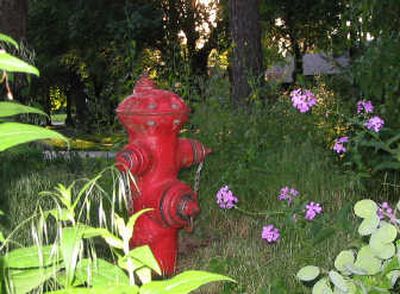Hydrant a marker of a time gone by

In the summer the red fire hydrant is visible among the flowers in Jim Price’s garden on the western edge of the Rockwood neighborhood. Today, it’s nearly buried in the snow.
But once, it was a landmark at Playfair Race Course, heralded (sort of) in song and visible in track photos of horses crossing the finish line. If not for Price’s fondness for the fireplug, it would have been sold for scrap when Playfair ceased operation in 2000.
Here’s the story, which starts with some information about front-running horses and popcorn.
Front runners frequently are horses who tend to run as far as they can as fast as they can but fade before the finish line. Back in the 1950s and 1960s, there used to be a popcorn stand about 100 yards from the finish line, which is just about the point where front runners’ strides would shorten and they’d be passed by the eventual winning horses, Price recalls.
So, it became track lore of sorts that the front runners would run out of gas when they reached the popcorn stand. When Price went to work at Playfair as track announcer and publicist in 1968 (he was there through 1978 and again 1992 to 1994), the popcorn stand wasn’t visible from the press box, where he and other members of the news media gathered.
What they could see, however, was the fireplug in the infield, some 70 yards from the finish line by the 16th pole. It was one of several fire hydrants that were part of the modern irrigation and fire control system installed in 1935 with the remodeling of the track and grandstand. So, they replaced the popcorn stand with the fireplug in their conversation about the fading front runners.
Price even wrote a song about it, which became part of the unofficial Playfair songbook:
When the track was demolished, a lot of history went with it – including the loss of one of the five oldest grandstands in American horse racing, the original portion of which was designed by noted architects Kirtland Cutter and Karl Malmgren. All that remains now at the Playfair site are the hedges that used to run across the infield, Price said.
But the fireplug meant so much to him that he approached the city of Spokane, which owned Playfair, to see if he could acquire it, promising to give it a good home.
The 1935 Corey fireplug now resides on a concrete pad in the garden adjacent to his home.
“(We) remain grateful to the city for helping us preserve this remnant of Playfair,” Price said. “It’s a small thing, but it means a lot to us.”